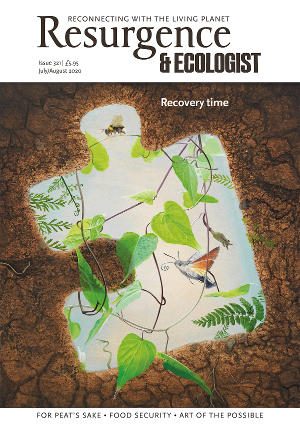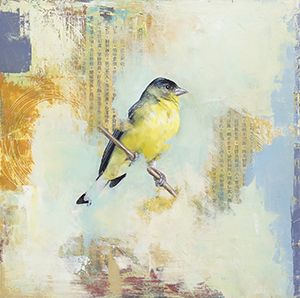There are people who ‘see’ birds, pay them regard, and there are those who wander through life and never hear the song of a wren, who never notice the birds with whom we share the planet. I have never understood these people who fail to love the shape of a bird.
The Birds They Sang introduced me to Stanisław Łubieński, a Polish birdwatcher, and, through his writing, to new ornithological wonders. In its way the book is a love song to birds. It weaves around the space where the lives of birds and the lives of humans intertwine. From the very first pages, where the author talks of Albrecht Dürer’s drawing of a little owl – part of his own falling in love with birds – through the art of Chelmoński, into music, with reference to Mozart’s pet starling, and the writing of J.A. Baker, the book is a celebration of the arts. It is not just a book for those of us whose hearts beat faster when we see the movement of wings, but one that could open up this world of birds to those who have yet to notice the beauty of them. It is Nature writing, perhaps at its best, weaving human and bird, city, park and country into a tapestry that sings off the page.
The book time-travels, exploring the relationships of prisoners of war with birds, and of prison guards too. It speaks of the importance of city parks and cityscapes to birds and other wildlife increasingly under pressure from humans. It talks of falcons nesting on the inner-city ‘cliffs’ of tower blocks, of passerines finding rest in scrubland and building sites. It carries in it the myths and misunderstandings of birds and their migrations, from medieval times to modern days – and isn’t it just remarkable that one small individual bird can travel so far, guided by instinct, the stars and the scents of the world on migratory paths that have existed for centuries?
There is such a sense of wonder and awe for these creatures threaded through the pages of this book that reading it lifts the heart. But don’t be fooled into thinking it is a sentimental offering. Łubieński also throws light onto some dreadful truths. First, he helps us to see in more depth the absolute and miraculous beauty of the species, from the smallest goldcrest to elegant cranes and great eagles, and then he reveals the darkness. From the dodo and its story of extinction, to that of Martha, the last-known living passenger pigeon, and the heartbreaking story of the Eskimo curlew, anger and frustration begin to rise over the losses of which we are culpable.
And another kind of creature is brought to light, one that I had failed to see, never taken notice of: those who kill birds for pleasure, for sport. The last chapter is a devastating call to link arms, to raise awareness of the horror and the cruelty of our own species in what would seem to be a war against birds, before it is too late. It shines a light on the netting, shooting and poisoning of huge numbers of birds, from song thrushes to buntings – in numbers I had never imagined.
The Birds They Sang will make you fall in love with these creatures all over again. It may also help people to realise the loss we are facing if we continue to do little to help those precious few we have left. It is a heart-song, a hymn of praise and a battle cry all in one, beautifully translated from the original Polish by Bill Johnston, and with black and white illustrations of some of the species mentioned.
We endure the loss. It is time to rage against it and make a change.








